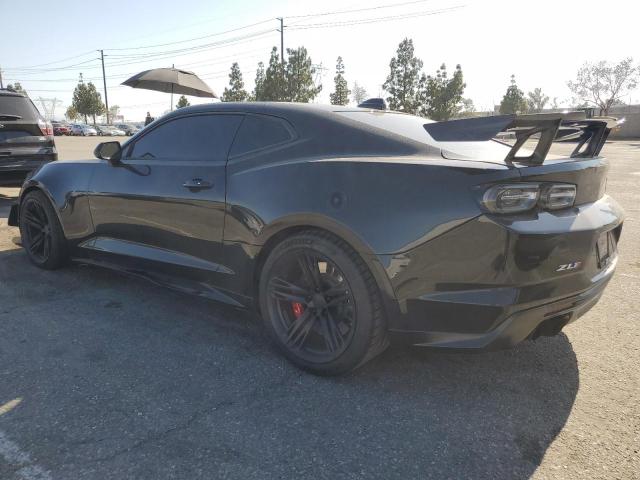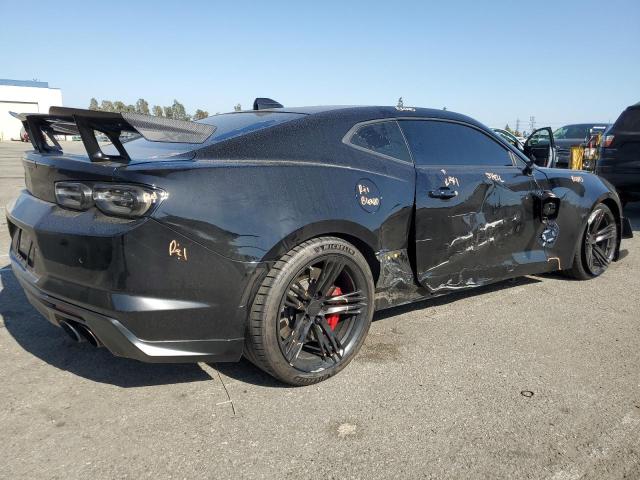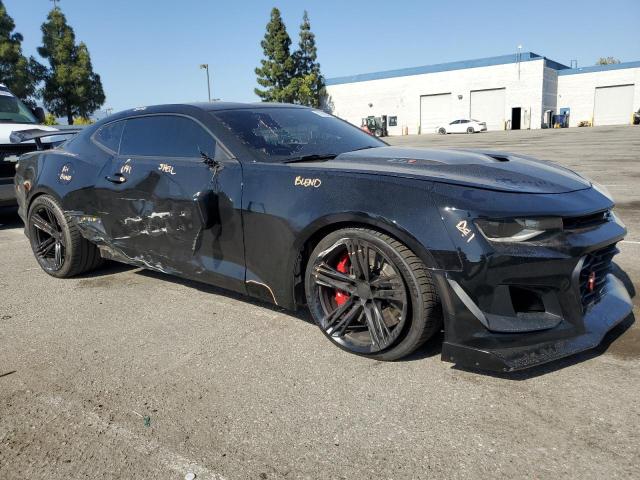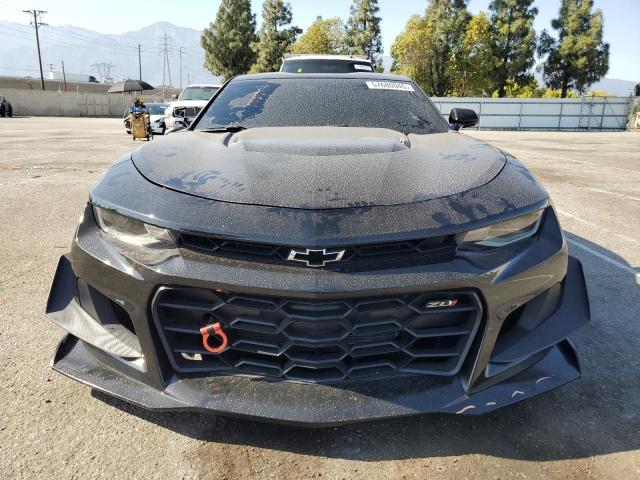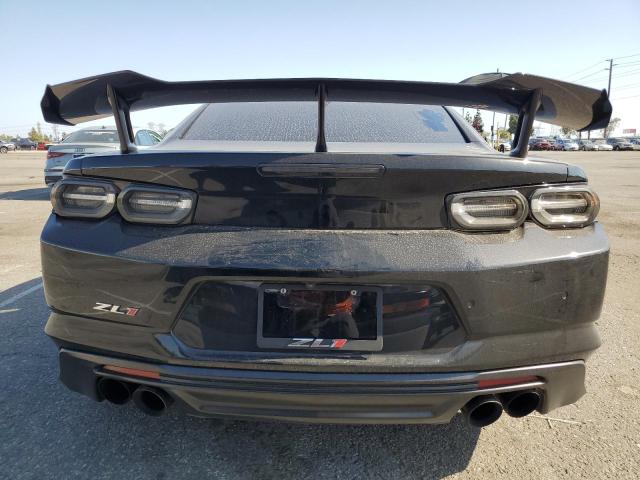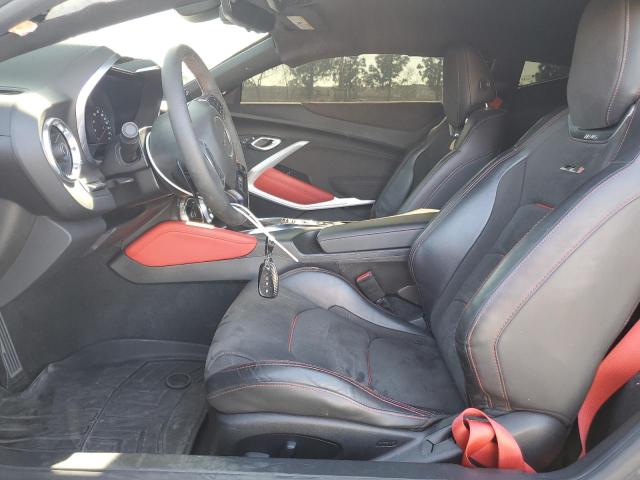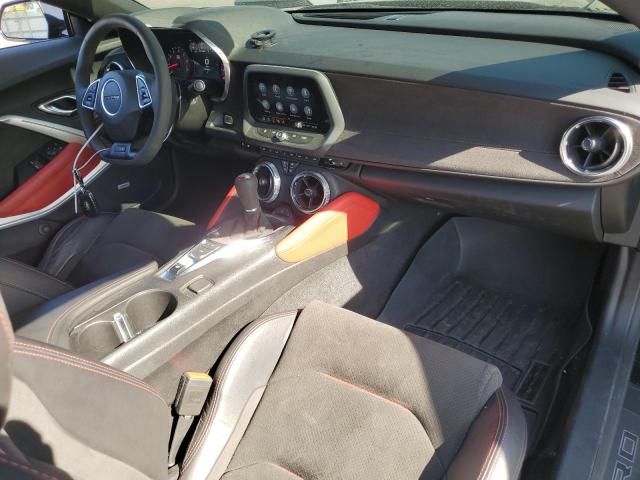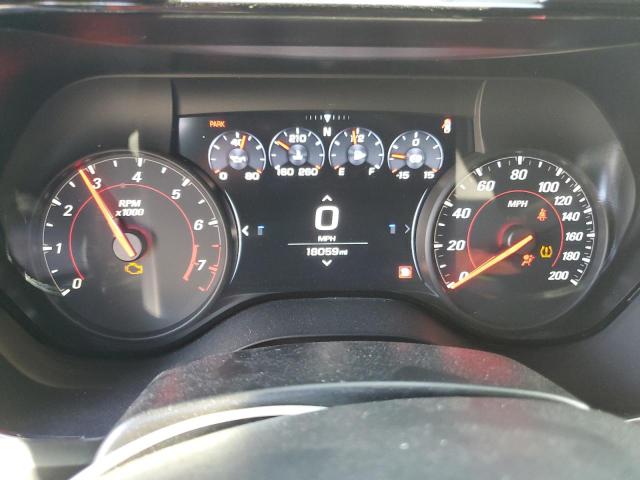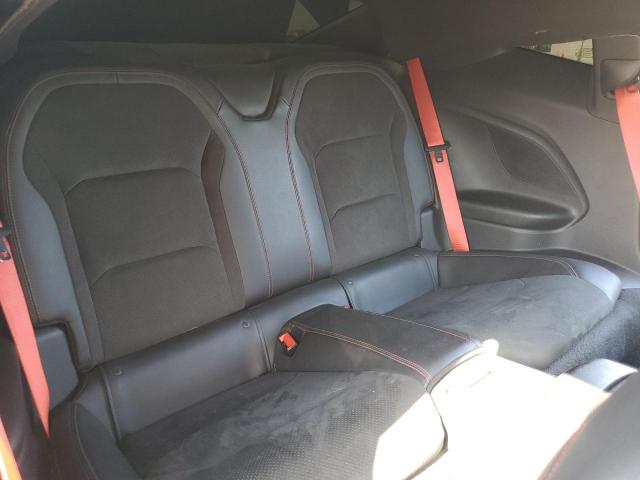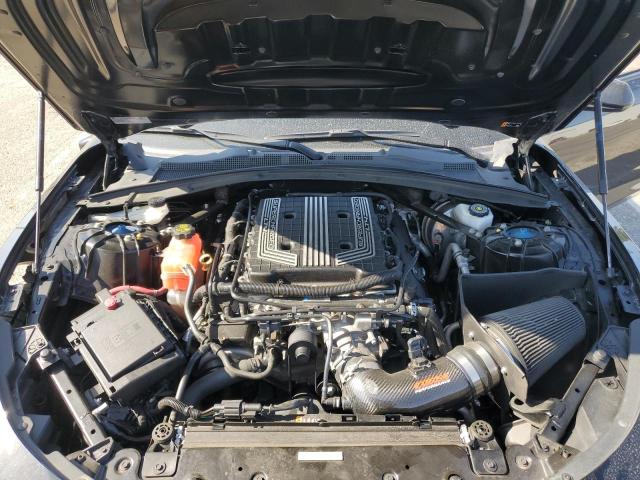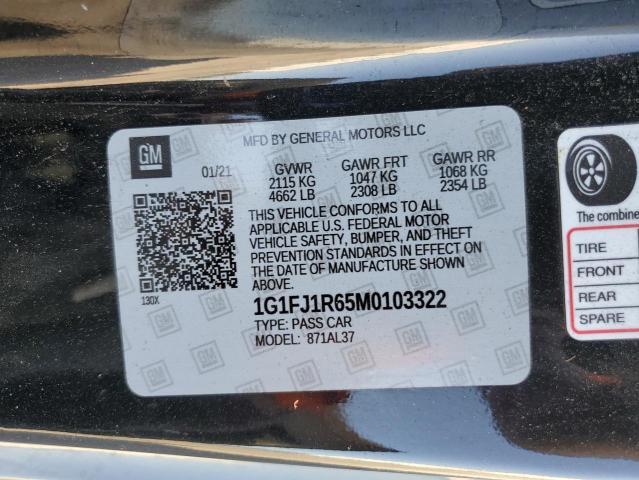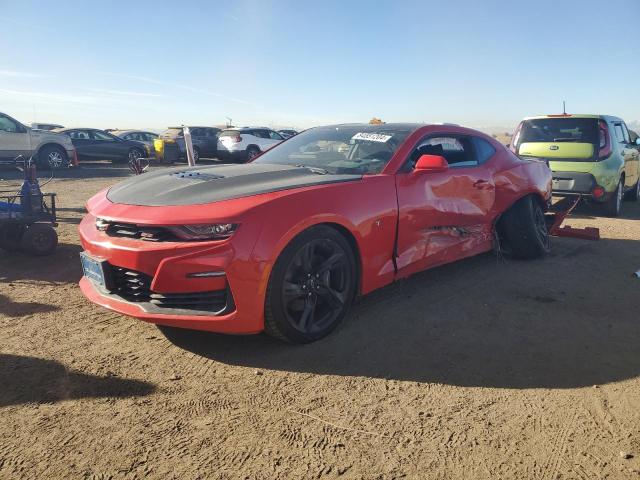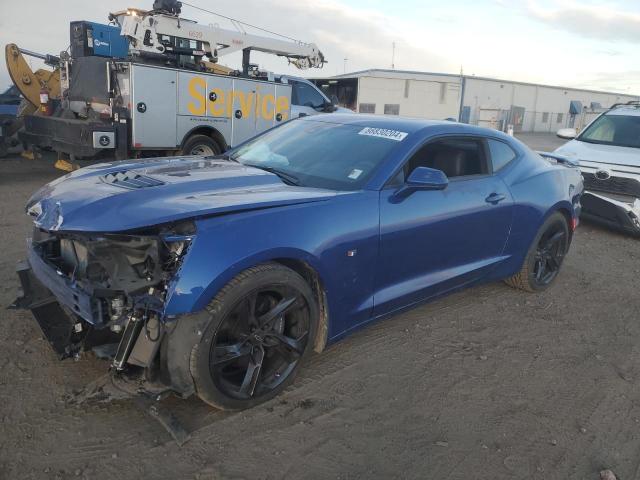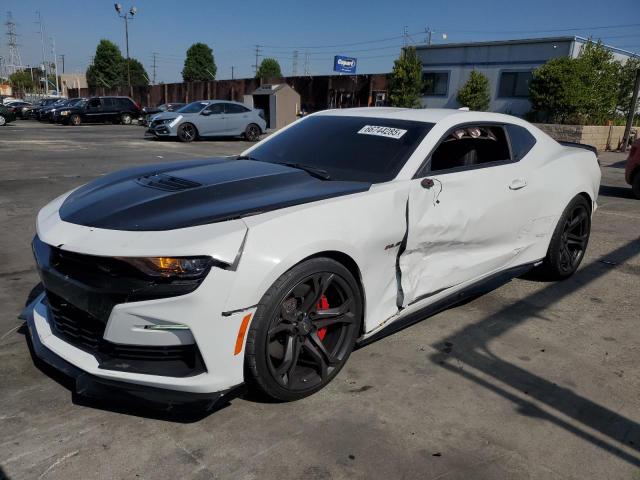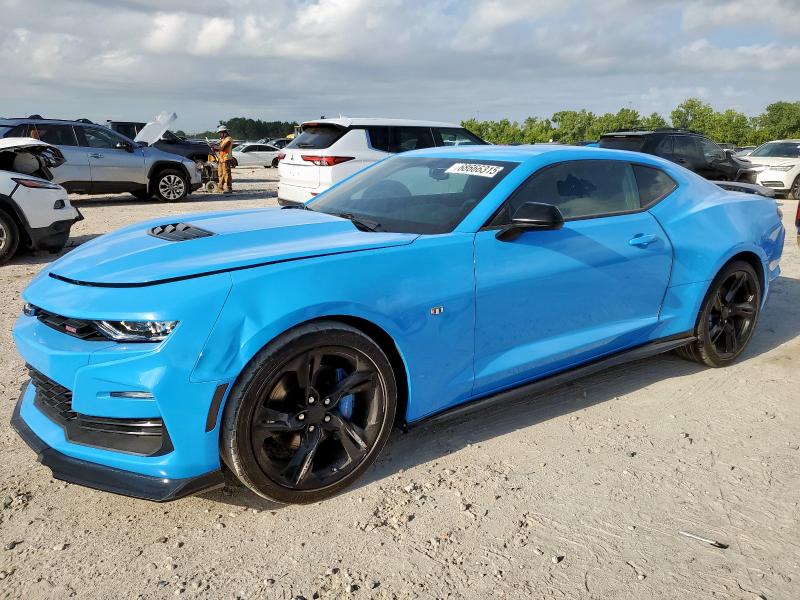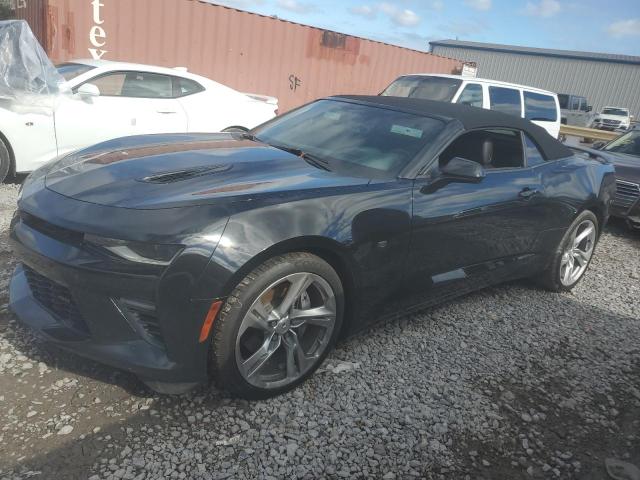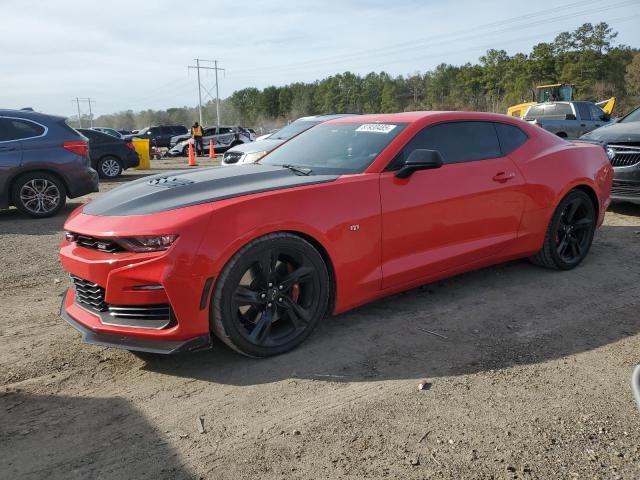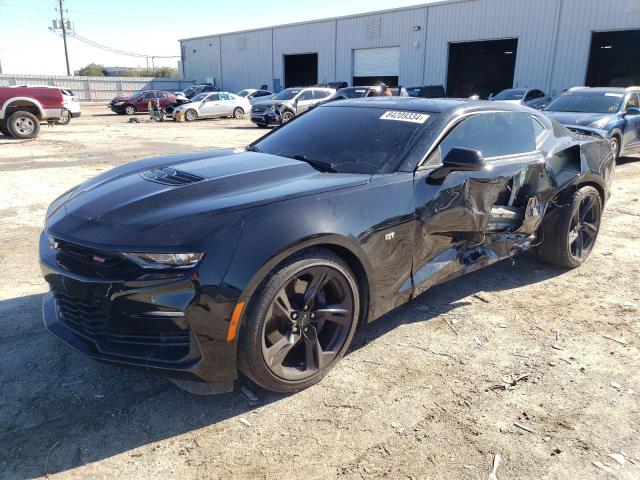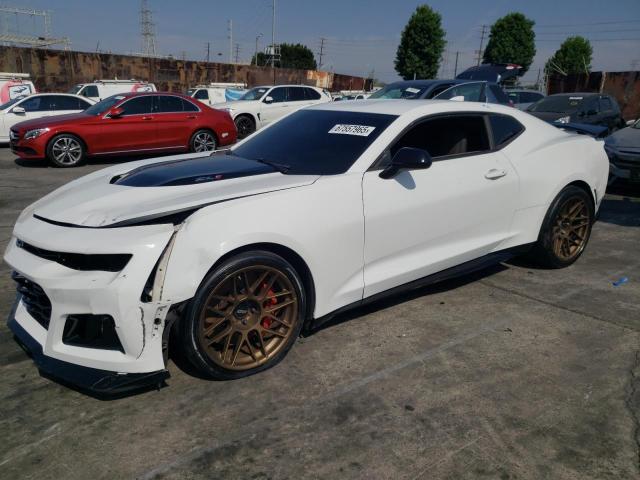2021 CHEVROLET CAMARO | 1G1FJ1R65M0103322
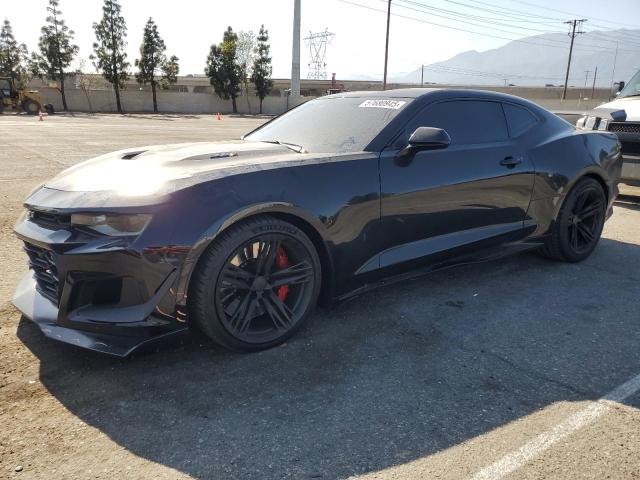 ❯
❯Vehicle specifications
4
~$69,000
Engine: 6.2L supercharged V8
Torque: 868 Nm
0–100 km/h: ~3.5 s
The sixth-generation Camaro transitioned from muscle car to world-class performance machine. Built on GM’s Alpha platform (shared with the Cadillac ATS/CTS), it featured a significantly lighter chassis, refined multilink suspension, and sharper steering than its predecessor. Even the base models with the 2.0T offered agile dynamics, ideal weight balance, and confidence-inspiring handling.
The Camaro SS with its 6.2L V8 delivered raw power and aggressive acceleration, but it was the ZL1 that truly set the benchmark. With the LT4 supercharged V8, Magnetic Ride Control, Performance Traction Management, available 1LE track package, and available carbon aero upgrades, the ZL1 could legitimately rival European supercars on road and track alike. It was even Nürburgring-tested and proven.
Inside, the Camaro offered driver-focused features like Recaro seats, HUD, performance timers, and track-oriented drive modes. Its low center of gravity, wide track, and responsive electronics allowed it to shine in autocross and road course settings — far beyond its muscle car image.
With this generation, the Camaro became a precision performance platform, and every trim — from I4 to ZL1 — offered genuine sporting intent. Especially in ZL1 and SS trims, the Camaro 2016–2023 rightfully belongs in a performance vehicle database.
Final Bid Chevrolet Camaro (2021)
$10,175
$17,073
$44,750
Body Styles
The Camaro was available in two forms: a 2-door coupe and a 2-door convertible with power soft-top. Its fastback roofline, long hood, and short rear deck reflect classic muscle car proportions, modernized with aggressive LED lighting, wide fenders, and aero-optimized bumpers. Despite its coupe styling, the car retains a functional trunk and usable back seats (for short trips).
Model Name Meaning (Manufacturer)
The name “Camaro” was created for the original 1967 model and, according to Chevrolet’s press materials, it means “comrade” or “friend” — though it was primarily chosen for its sound and memorability. It was meant to challenge the Ford Mustang directly. The sixth-generation Camaro was based on GM’s lightweight Alpha platform (shared with the Cadillac ATS), making it more of a sports coupe with muscle DNA than a pure muscle car.
Model Name Meaning (Languages)
While the name “Camaro” doesn’t have a literal meaning in most languages, its legacy has made it globally recognizable. In American pop culture, it’s synonymous with V8 power, burnouts, and rebellious style. Across Europe and Asia, it symbolizes American performance heritage, often interpreted as a counterpart to Mustang or Challenger.
Body & Interior Colors and Rims
The sixth-generation Chevrolet Camaro (2016–2024) refined the modern muscle car formula with sharper handling, improved build quality, and bolder design — and much of its personality was expressed through a wide range of body colors, interior themes, and wheel options. With trims ranging from the base LT to the track-focused ZL1 1LE, the Camaro allowed buyers to tailor their car’s attitude, whether they leaned toward retro muscle or modern aggression.
The body color palette evolved across the years, offering everything from classic American tones to edgy, modern finishes. Core colors like Summit White, Black, and Red Hot remained staples, while fan favorites like Riverside Blue, Shadow Gray Metallic, and Satin Steel offered more sophistication. More expressive options included Shock (a highlighter yellow), Wild Cherry Tintcoat, Vivid Orange, Rapid Blue, and Radiant Red — giving the Camaro a bold visual impact. The ZL1 and SS trims often introduced exclusive shades or satin hood wraps, and special editions such as the Shock and Steel Edition or Collector’s Edition came with unique badging, stripes, or two-tone paint schemes.
Inside, the Camaro’s cabin offered a range of materials and themes tailored to trim level and package. Base models came with Jet Black cloth or leather, while upper trims introduced two-tone leather combinations, suede inserts, contrast stitching, and ambient lighting. Colors like Kalahari, Adrenaline Red, Ceramic White, and Medium Ash Gray allowed for sporty or upscale personalization. Performance trims such as the 1LE and ZL1 featured Recaro sport seats, suede-wrapped steering wheels, red seatbelts, and minimalist, track-oriented trims. While the cabin retained a driver-focused layout, improvements over the previous generation included an updated infotainment system, digital instrument options, and more premium soft-touch materials.
Wheel designs were a defining visual and functional element across the Camaro lineup. Base models typically came with 18-inch five-spoke or split-spoke alloys in silver or machine-finished aluminum. RS and SS trims featured 20-inch wheels with more intricate spoke patterns, gloss black or polished faces, and optional dark-tinted finishes. Track-ready versions such as the SS 1LE and ZL1 1LE wore lightweight forged 19-inch wheels with satin black, graphite, or bronze finishes — often wrapped in track-spec Goodyear Eagle F1 tires. Some special editions added unique wheel center caps, stripe-matched rims, or dark accents to further distinguish them.
Top Expensive Options
- 1LE Track Performance Package (SS/ZL1): $7,500
- Magnetic Ride Control (SS, ZL1): $1,695
- Dual-mode Performance Exhaust: $995
- Recaro Performance Seats: $1,595
- Navigation and Bose Audio System: $1,495
- Red Seat Belts + Sueded Interior Package: $500
- Sunroof (Coupe only): $995
- 10-speed automatic (optional on V8): $1,595
- Carbon Fiber Hood Insert (ZL1): $1,000
- Performance Data Recorder: $1,300
vs Competitors
The sixth-generation Chevrolet Camaro (2016–2024) entered a highly competitive field and quickly gained a reputation as the most driver-focused of the modern American muscle cars. Compared to the Ford Mustang, the Camaro offered sharper steering, better chassis balance, and a lower center of gravity thanks to its Alpha platform. While the Mustang had broader appeal with a more user-friendly interior and larger trunk, the Camaro delivered superior agility and track composure, especially in performance trims like the SS 1LE and ZL1. Dodge’s Challenger, by contrast, leaned heavily into retro styling and straight-line muscle. It offered more space and comfort but lacked the precision and refinement of the Camaro, making it better suited to cruising than corner carving.
Beyond its domestic rivals, the Camaro also overlapped with performance coupes like the Nissan 370Z and later the Nissan Z. While the Z-cars offered engaging manual driving and a classic sports car layout, the Camaro provided significantly more power and modern handling sophistication, especially in V8 form. The Toyota GR Supra delivered impressive turbocharged performance and a nimble chassis co-developed with BMW, but the Camaro SS and ZL1 held their ground with rawer, more visceral power and a choice of manual or automatic transmissions — something the Supra only added later.
European coupes like the BMW 2 Series and Audi TT were often more refined inside and offered luxury-tech appeal, but the Camaro could outperform many of them on a twisty road or track, especially at its price point. Even against lightweight rivals like the Subaru BRZ or Toyota 86, the Camaro distinguished itself with its wider power range and more serious performance hardware, though it couldn’t match those cars for tossable, beginner-friendly dynamics.
Fun Fact
The Camaro ZL1 1LE is faster around the Nürburgring than a Ferrari 458 Italia, thanks to its Multimatic DSSV dampers, huge rear wing, and aggressive aero. It was also one of the last American V8s to offer a manual gearbox paired with over 650 hp, making it a future classic among analog purists.


